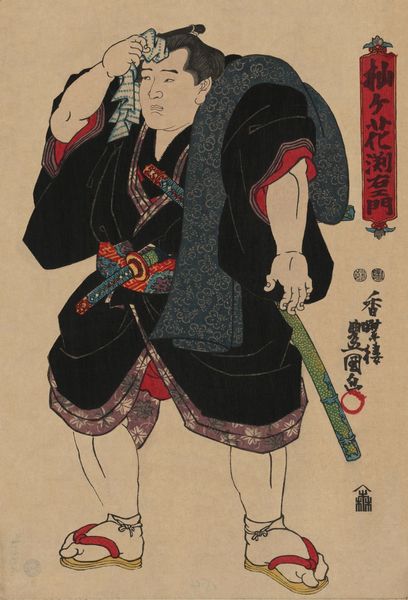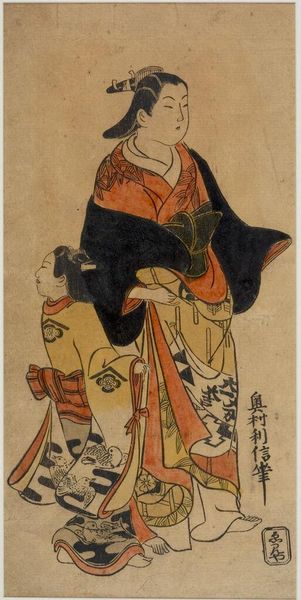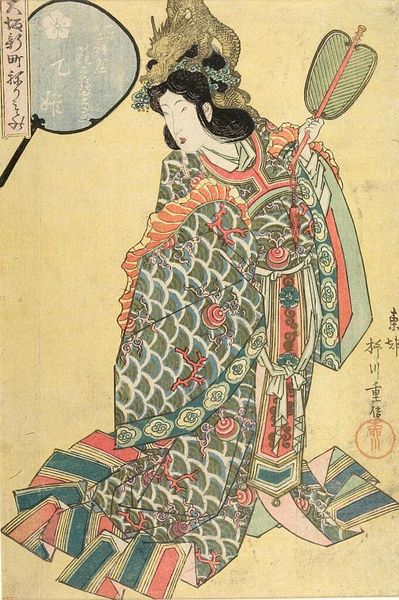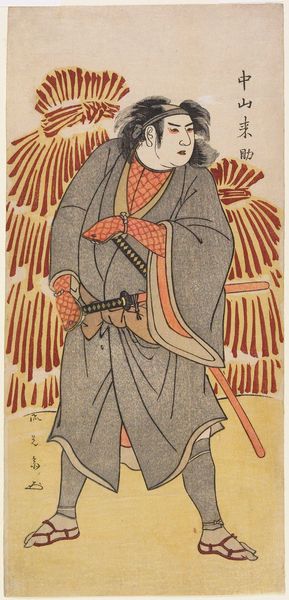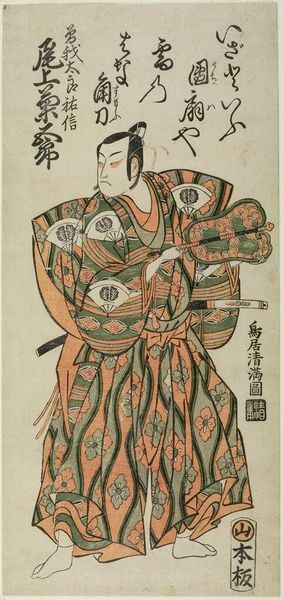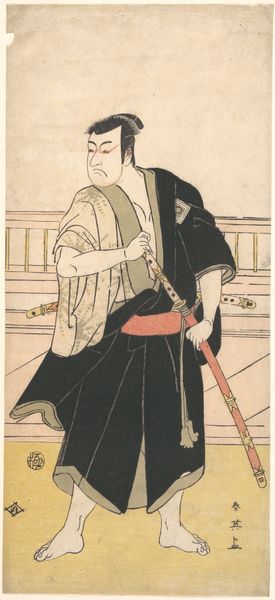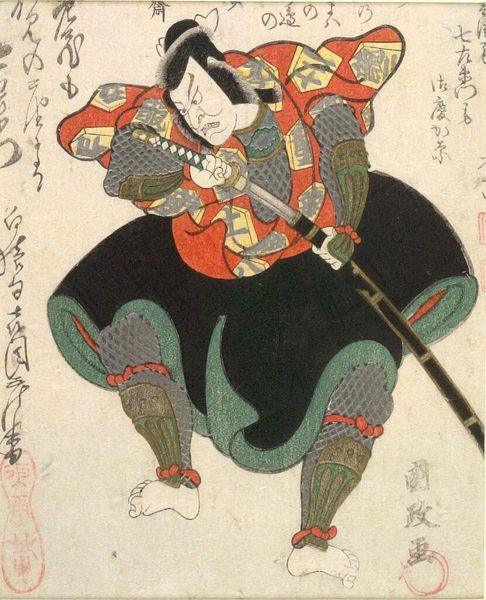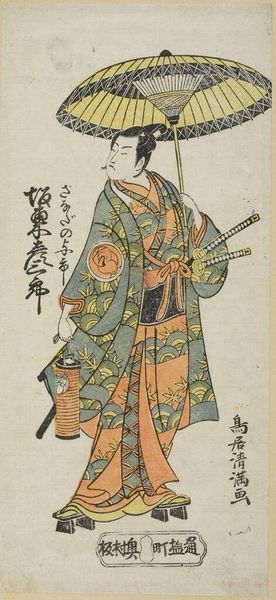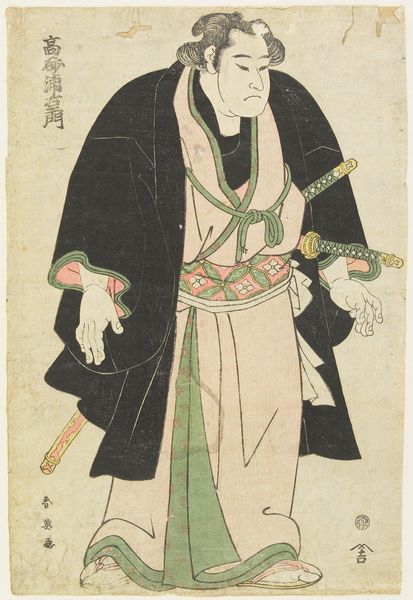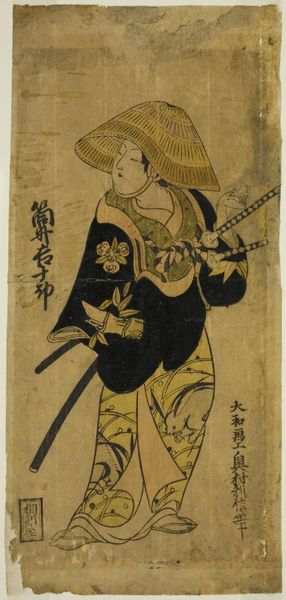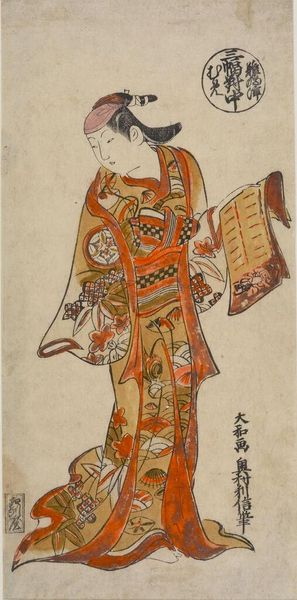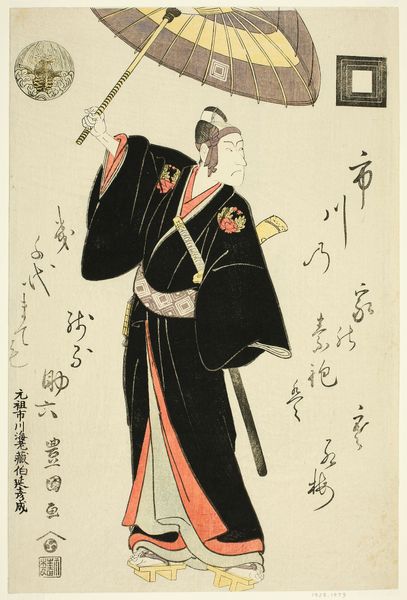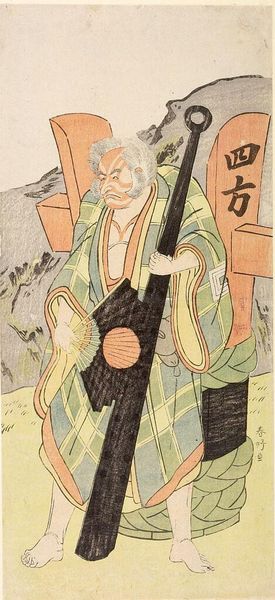
print, woodblock-print
#
portrait
# print
#
caricature
#
asian-art
#
caricature
#
ukiyo-e
#
woodblock-print
#
genre-painting
#
portrait art
Copyright: Public domain
Editor: So, here we have Sharaku's "Kabuki Actor Tanimura Torazo I as Kataoka Gemon" from 1794, a woodblock print. I’m immediately struck by the actor's intense expression. What do you make of it? Curator: Well, let’s think about what it took to create this. Consider the laborers involved: the artist, of course, but also the woodblock carvers, the printers… Ukiyo-e were mass-produced, made affordable through division of labor. This democratization allowed for a wider consumption of art. How does that accessibility influence our understanding of its value? Editor: That's fascinating. So, the value isn't just in Sharaku's artistry, but also in this whole system of production? Curator: Exactly. The materiality of the print—the paper, the ink—speaks to the socio-economic context. Were the inks locally sourced, impacting the vibrancy and quality of colors? These details offer insights into the network of resources required to produce it. How did these constraints maybe also enable particular aesthetic choices? Editor: I never really considered the materials that deeply. Does the type of wood used for the block have any significance? Curator: Absolutely! Different woods would have different grains, affecting the detail and texture achievable in the print. Examining the finished product in relation to the materials and labor unveils hidden layers of meaning about its creation and initial intended audience. It blurs lines between “high art” and “commodity," don't you think? Editor: Yes, I see your point. Thinking about the wood and ink as commodities and then the print itself too – that changes how I see its role. It’s more integrated into the daily lives of people then, less separate. Curator: Precisely! And, thinking about the Kabuki actor, how does representing a performer—already engaged in a kind of 'labor'—fit into our analysis? The portrayal and circulation of the print amplifies its role. It gives another way to think about production. Editor: This makes me want to look at other ukiyo-e prints through this material lens! Curator: Exactly! And it enriches our understanding of artistic expression and the cultural contexts from which these objects arise.
Comments
No comments
Be the first to comment and join the conversation on the ultimate creative platform.

